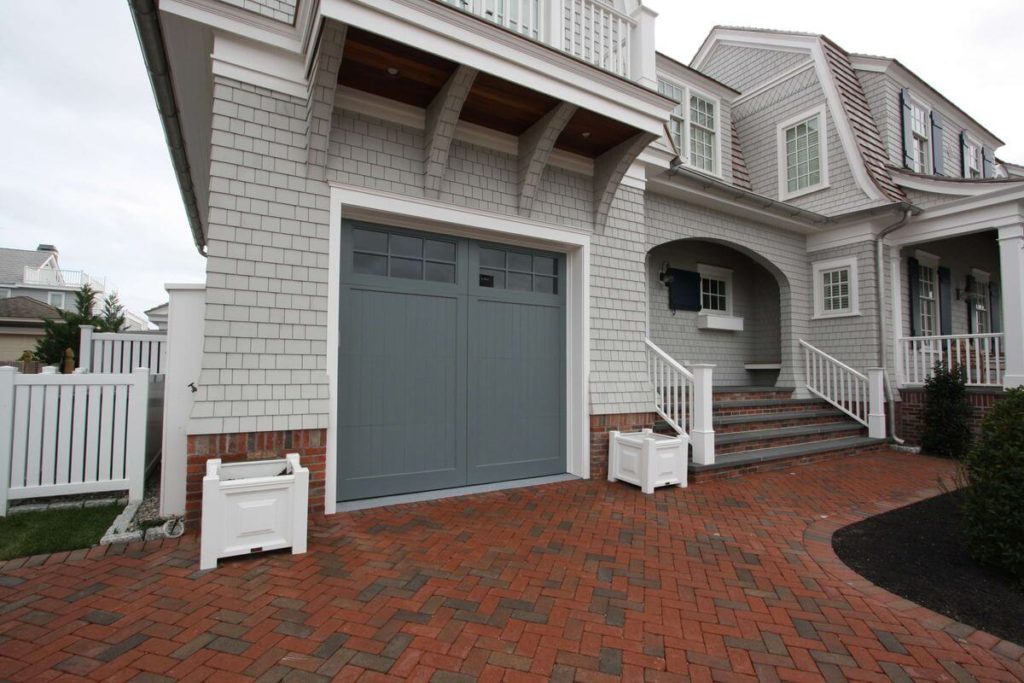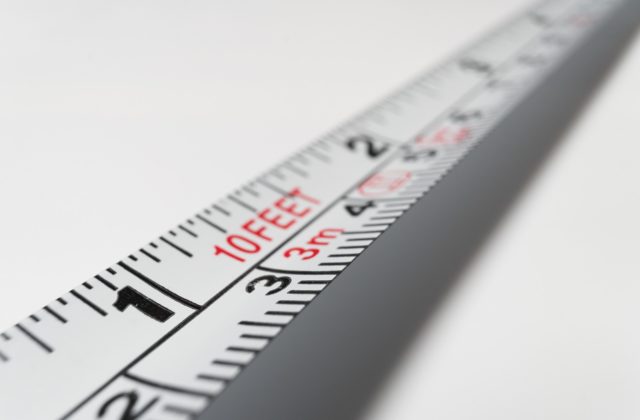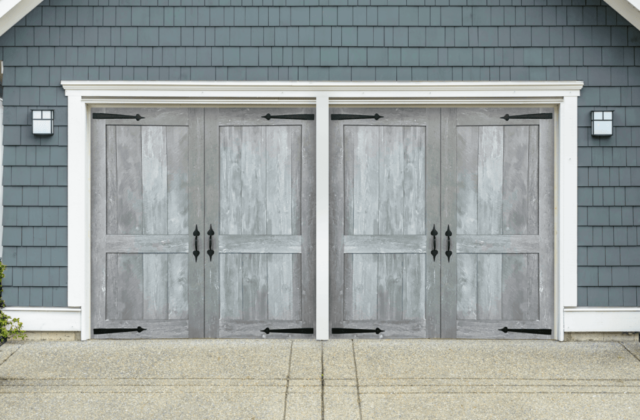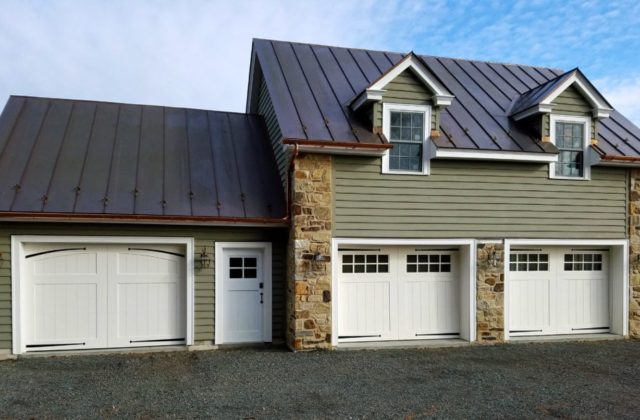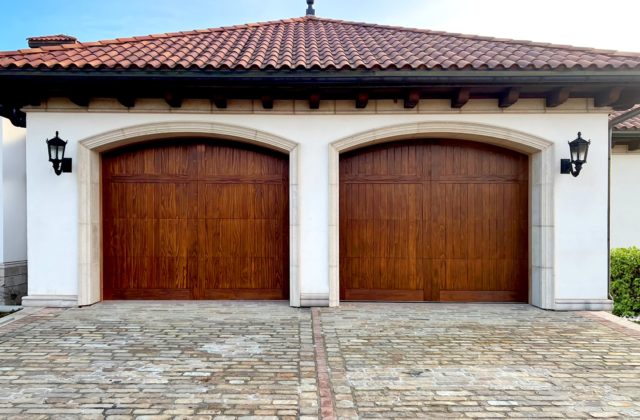Whether you’re looking for creative ways to upgrade your garage interior or trying to boost your garage’s curb appeal, adding good lighting is an easy way to improve your space. When it comes to garage lighting, there are a variety of options, including different colors, styles, types, and more.
Trying to work through what type of lighting is best for a garage? From the types of light options to the bulbs used, we have the tips and tricks you need to purchase the best garage lighting for your home.
Types of Indoor Garage Lights
Finding the best garage lighting means covering the interior as well as the exterior. Adding indoor garage lighting is not only practical, but can also help upgrade the interior of your garage space. There are many types of indoor garage lights, and you can choose which type will be most suitable for you depending on what you’d like to achieve.
Utility Lights
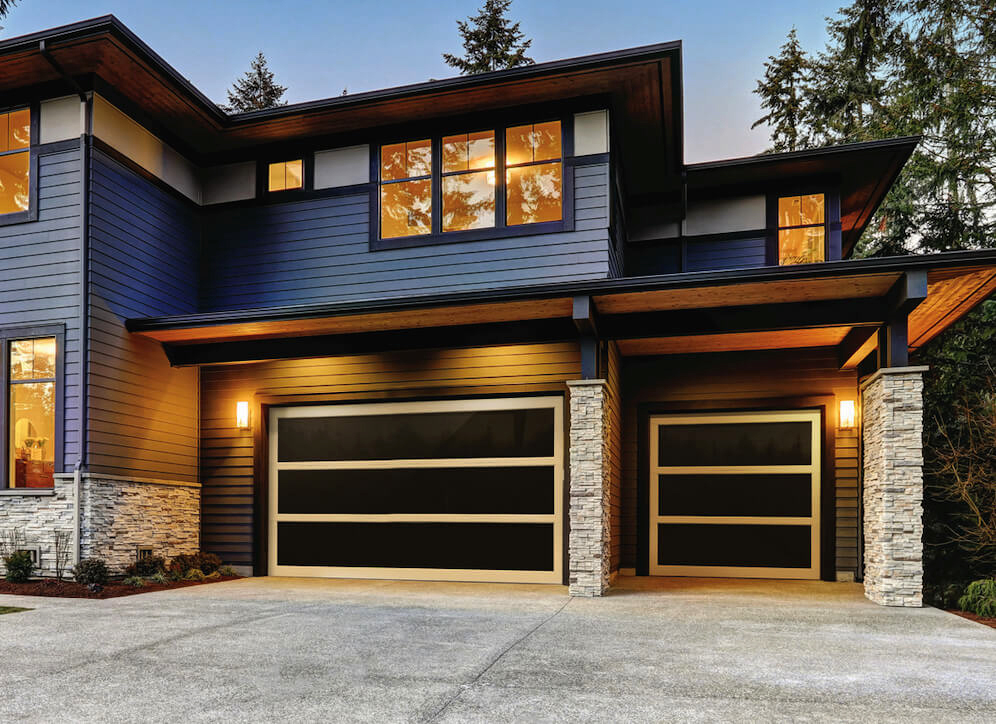
Also known as shop lights, these are must-haves for garages with workspaces. These new versions of fluorescent lights are simple, cost-effective lighting fixtures that still provide great amounts of illumination.
Utility lights are great for small and compact spaces. These low-watt and energy-efficient lights work to naturally enhance the interior lighting of your garage.
Wraparound Lights
Wraparound lights are best for garages that have lower ceilings. They’re installed level with the ceiling surface, so they don’t hang like utility or shop lights. Since wraparound lights have a unidirectional light source, they direct light from both sides, as well as the bottom, resulting in a larger spread of light overall.
These fixtures are good options if you want to keep them out of the way of ladders, boards, and other objects you may be moving around your garage.
High Bay Lights
When trying to illuminate large spaces, high bay lights are your best option. Their output is extremely powerful, making a dull or dim garage look less dreary. High bay lights can be suspended from the ceiling by pendants, hooks, or chains, or fixed into the ceiling directly.
Areas with high ceilings are best for this fixture. High bay lights provide a clear type of illumination that’s consistent and lasts more than 40 times longer than an average bulb.
Recessed Lights
Also known as pot lights, this kind of light fixture is attached in hollow openings in the ceiling. They concentrate light in a downwards manner and consist of three main parts: trim, housing, and bulb.
People are attracted to recessed lights because they provide powerful illumination while hiding the light fixtures and providing full room light coverage.
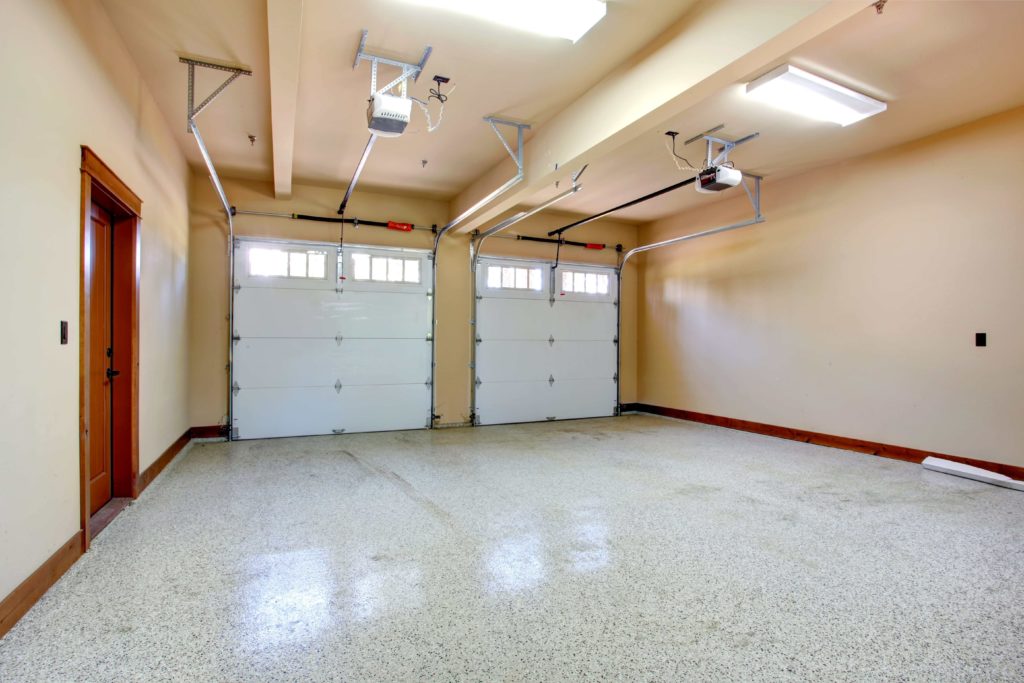
Types of Outdoor Garage Lights
Outdoor garage lights have many advantages and play just as big a part in finding the best garage lighting for your space. Besides lighting the exterior of your garage – making it easy for you to navigate your way around – they also can elevate your curb appeal. Similar to garage door accessories, placing lights outside your garage can add to the overall look or style of your outdoor space.
Motion Sensor Garage Lights
These lights will automatically turn on if they detect movement within their detection area. This allows people to move around outside their garage safely without looking for the light switch. It’s also one of many ways to prevent home invasions using garage security because they reveal trespassers or unwanted guests to homeowners.
Garage Coach Lights
While these lights aren’t motion-sensored, they provide an attractive overall look. Garage coach lights come in numerous designs and styles, and you also have the option of choosing whichever bulb you want.
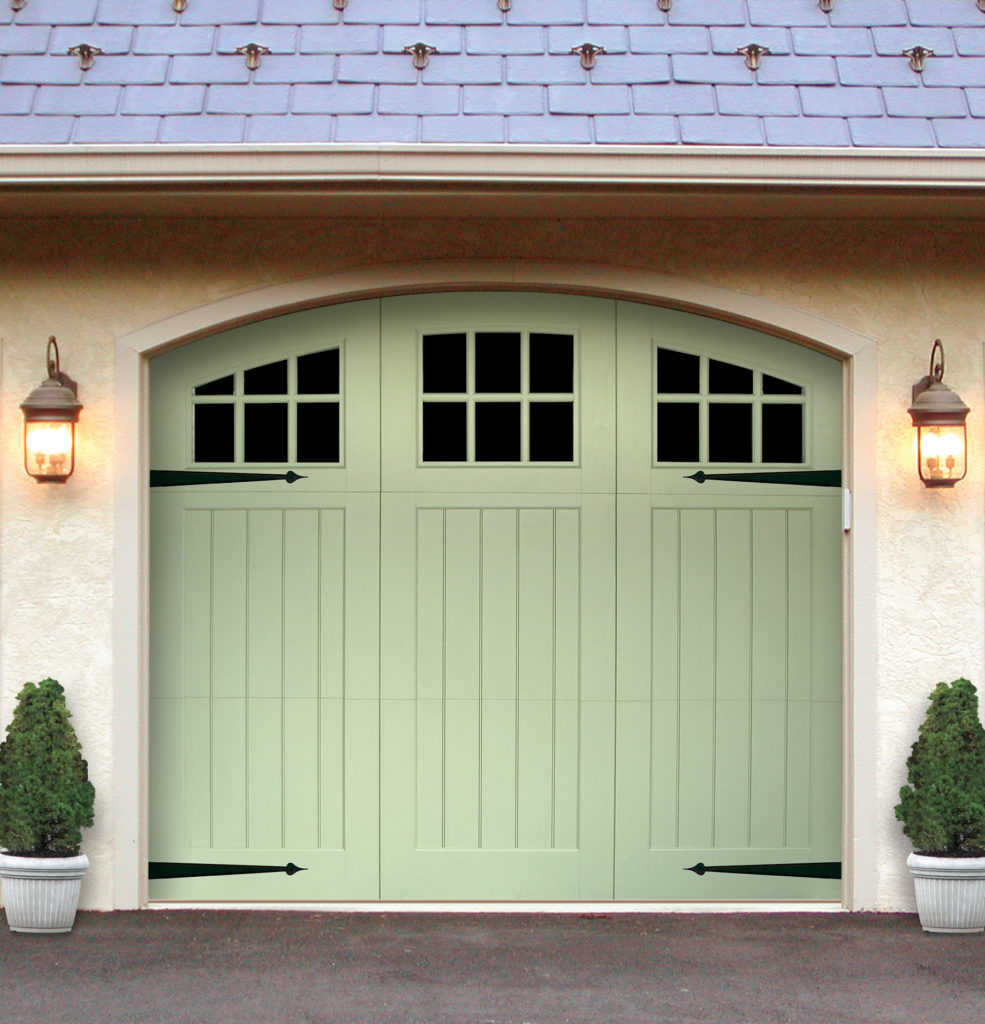
Types of Light Bulbs
Knowing the types of garage lights available is only the first part of finding the best garage lighting. You also need to weigh the advantages and disadvantages of each type of bulb you can use.
Fluorescent or LED Bulbs
Fluorescent or LED light bulbs are the most commonly used bulbs because they’re energy-efficient and still emit the same amount of brightness as their competitors. They’re long-lasting and don’t produce any heat, reducing injuries and fire hazards. Flourescent or LED lights can also be programmable and change colors.
Compact Fluorescent Bulbs (CFL)
Compact fluorescent or CFL light bulbs are becoming increasingly popular among homeowners. They come in a variety of colors and can light up broad spaces. CFL bulbs tend to be pricier than other options, but they’re more energy-efficient and last longer than most bulbs.
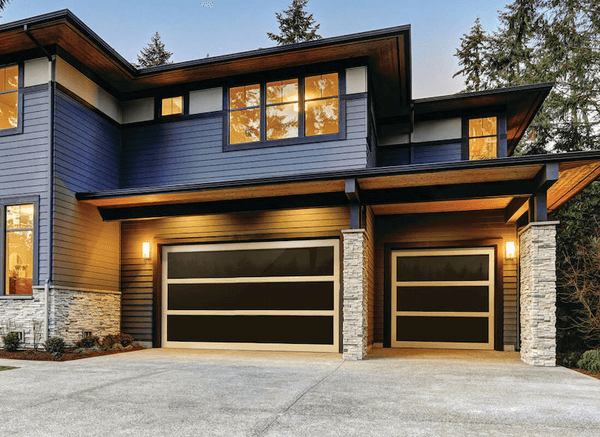
Explore Our Other Blogs
How To’s: Get expert advice from Artisan on how to maintain and care for your garage doors.
Finishes & Materials: Learn about the different finishes and materials that go into making garage doors and figure out which is best for you.
Designs and Ideas: Stay up-to-date with the latest garage door ideas and designs to boost your curb appeal.
Halogen Bulbs
Halogen light bulbs emit a white light that’s perfect for spotlights or fixtures that produce highly-focused beams of light. While they do create a much brighter light than most bulbs, halogen lights have a shorter lifespan and are much hotter.
Incandescent Bulbs
Incandescent light bulbs are one of the most affordable options available. These old-fashioned light bulbs emit a golden glow. They don’t last as long as CFL or LED lights, and they’re also not as energy efficient.
6 Things to Consider When Buying Garage Lighting
Once you understand the different types of lighting and the variety of bulbs you can use, there are certain elements for you to consider when choosing the best garage lighting. After accounting for each variable, you’ll be able to narrow down which lighting option is most suitable for your garage or workspace.
1. Brightness
In most cases, garages have very little to no natural lighting. This means if you’re looking to improve visibility, you’ll need to consider how much light you want. Brightness is measured by lumens, and the more lumens, the brighter the lighting will be.
The ideal lumen range for workshop and garage lighting is approximately 3,500. You can use this as a baseline when deciding how bright you want your garage to be.
2. Color Temperature
The color of the light produced is known as color temperature and measured with kelvins. Color temperatures range between 3,500K and 6,000K. The lower the number, the warmer or more yellow the lighting will be, whereas the higher the number, the cooler and more blue the lighting will be.
The best temperature to aim for when it comes to garage lighting is around 5,000K. This light will be slightly blue, but not too glaring or harsh.
3. Energy Efficiency
There are multiple tips you can follow to have an energy efficient garage, but lighting is one of the best ways to accomplish this. More modern lighting fixtures use the least amount of energy.
Older incandescent bulbs use more energy, whereas fluorescent bulbs can cut energy consumption by approximately 70% over an incandescent bulb that produces the same amount of light. LED bulbs further reduce energy consumption by approximately 90%.
4. Installation and Connectivity
There are a few different ways you can install lighting fixtures, including common, easy-to-install options intended for people who don’t have much electrical experience. The easiest way to do this is by using screw-in bulb installations. These multi-positional LED fixtures screw into a basic light base and don’t require any extra wiring.
You can also use plug-in systems that can be strung throughout the garage to produce light. These systems work through standard outlets, meaning you simply plug them in and flip the switch.
Fluorescent lighting requires more installation because it has ballasts that regulate the voltage to the light bulb. This means it needs hardwiring into an electrical circuit within a garage, which is not too complicated, but does take longer.

5. Longevity
Each light bulb has its own average rated lifetime hours. LED bulbs can last 25 to 30 times longer than an incandescent bulb, and can do so while reducing the amount of energy consumed. A fluorescent bulb can last as long as 9,000 hours, compared to an incandescent bulb’s 1,000 hours.
6. Climate
LED bulbs are the best options for unheated garages in areas that experience colder weather because they don’t need to heat up. LED bulbs immediately produce consistent, energy-efficient light in any temperature, including very cold winters.
Some fluorescent lights can’t operate if the air temperature is below 50 degrees Fahrenheit, whereas LED lights actually become more efficient in colder temperatures.
